Includes per person per night:
- 3-course dinner (chef's choice)
- Overnight accommodation
- Breakfast
4.422580634394 of 5 Stars
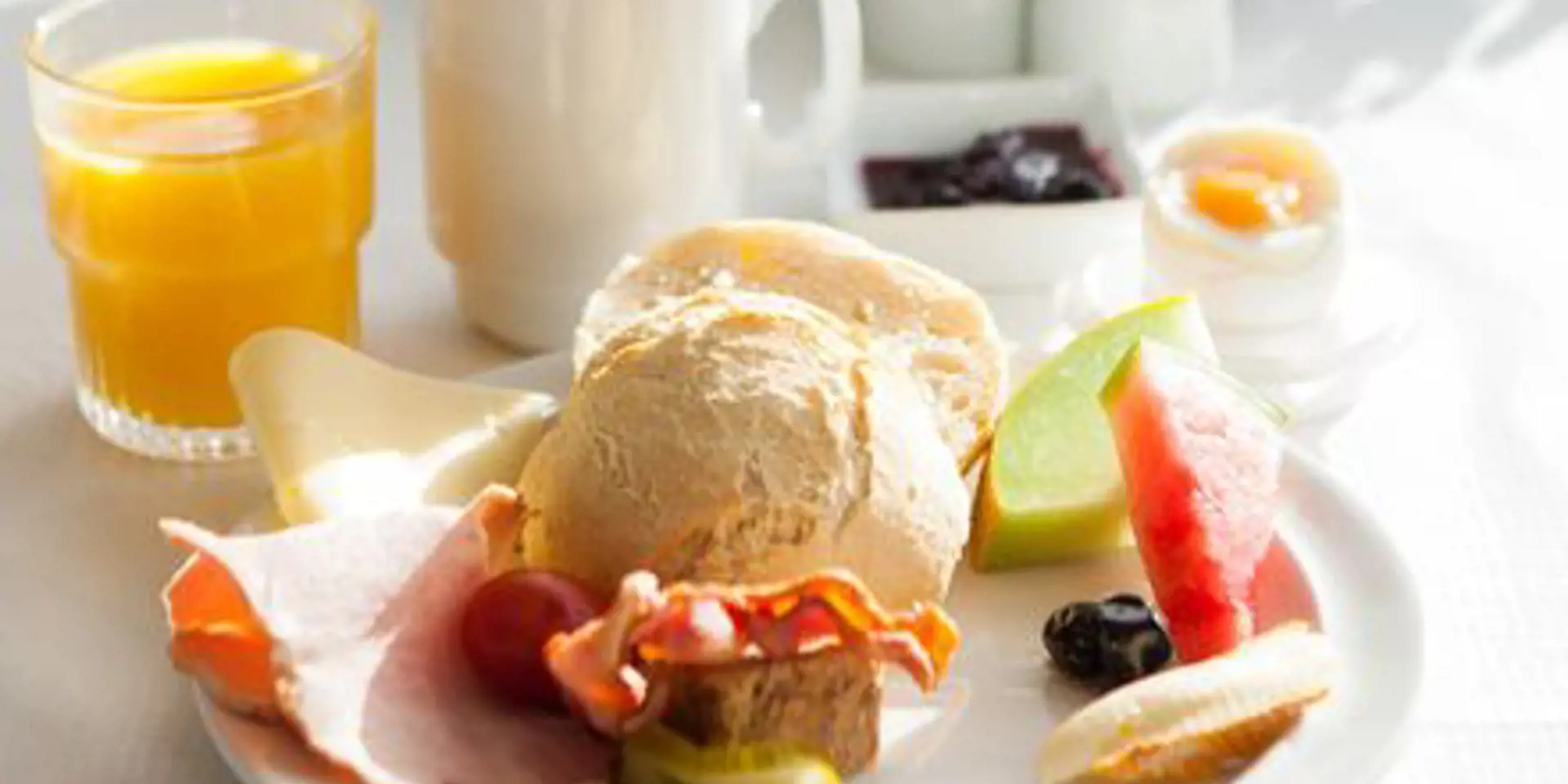
Includes per person per night:
Click the "See calendar and prices" button to choose dates and see the room selection.
See calendar and prices: Stay With Half BoardA cozy and bright family-owned hotel in the beautiful Bangsbo area. Bangsbo is located in the southern part of Frederikshavn, nestled against Bangsbo Forest and the deer park, with must-see attractions such as Bangsbo Fort, Pikkerbakken, and the Botanical Garden. Using the hotel as a base, you have plenty of opportunities for an active holiday, including hiking and biking. At Restaurant Møllehuset, delicious dishes are served, based on local and organic ingredients from Danish cuisine.
Søndergade 248, 9900 Frederikshavn
Show map

3 days / 2 nights - 01.06.-31.08.
Includes per person per stay:

2 Days/ 1 Night
Includes per person per stay:

Includes per person per stay:
2 x overnight accommodation
1 x Glass welcoming sparkling wine
2 x 3-course menu at Restaurant Møllehuset
1 x 2 stk. day tickets to Bangsbo Kystmuseum: Kystmuseet Bangsbo & Bangsbo Fort
2 x Breakfast
1 x Lunchbox

Includes per person per stay:

Includes per person per stay:

Includes per person per stay:
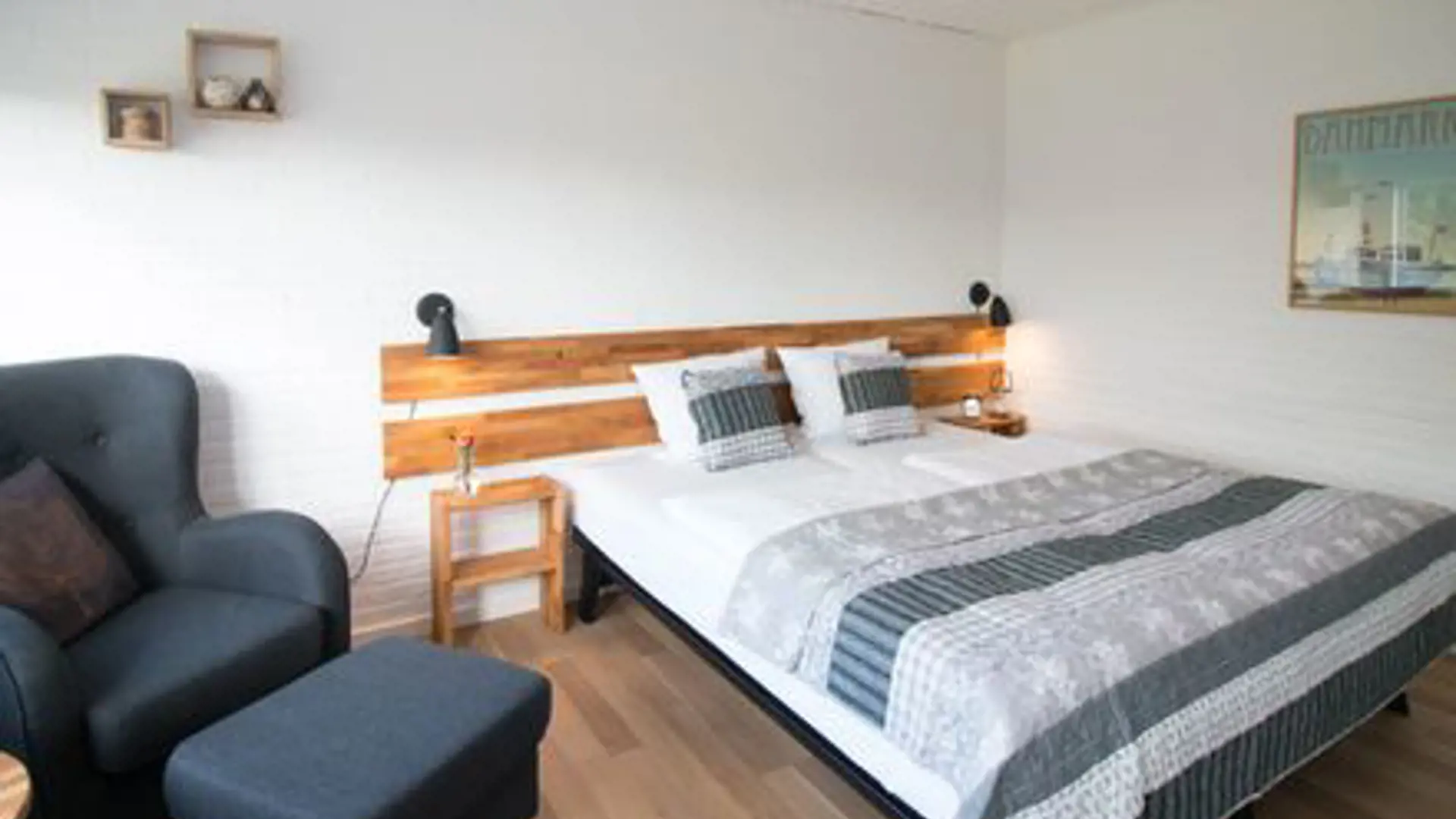
Includes per person per night:
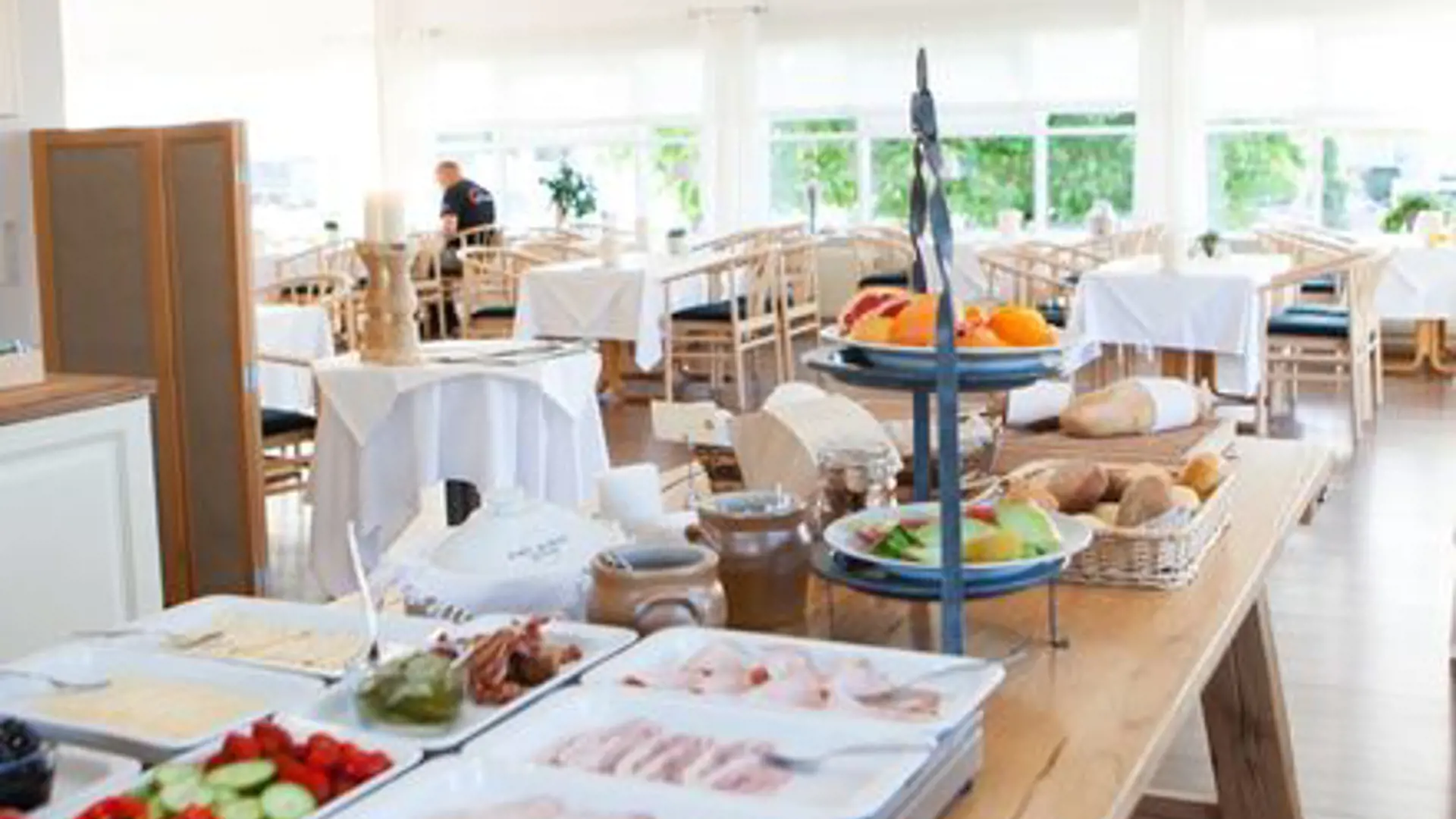
Minimum 3 days/2 nights
Includes per person per night:

Minimum 3 days / 2 nights
Includes per person per night:

Oplevelsesgavekort med Produktid: 25021549
Inkluderer for 2 personer:

0.95 km

0.95 km
One of the greatest experiences is observing the deer and enjoying the sight of them up close throughout the year. Especially in spring, when they give birth, and in autumn, during the rutting season.
Besides the deer, the area is also an excellent spot for birdwatching, whether in the forest or along the Bangsbo River. Here, you might spot the great spotted woodpecker, among others. The wildlife park is also home to squirrels, mice, and forest snails.
Additionally, you can explore the diverse flora. Alongside the impressive oak and beech trees, you will find ash, maple, birch, alder, hazel, and elder. It is also possible to come across remarkably large and beautiful Norway spruces and Austrian pines. Pigeons and squirrels are frequently seen in the park as well.
The wildlife park also features a nature playground with a picnic shelter, where you can enjoy your meal in idyllic surroundings.
Furthermore, the hilly terrain provides a glimpse into the glacial meltwaters from more than 10,000 years ago, with deep ravines and high hills. Here, you can also find ancient beech and oak trees, some over 200 years old. Among them stand large, old silver firs, planted in the late 19th century.
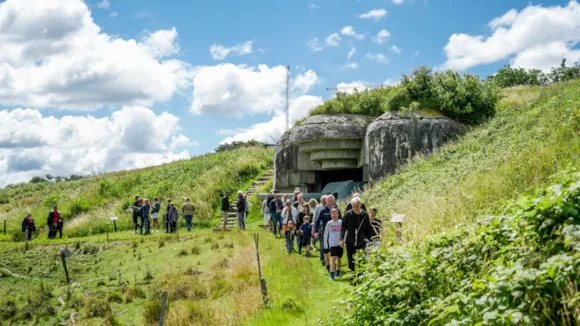
1.37 km
The fort was built by the Germans during 2. In 1944, it was armed with four 15 cm cannons from the artillery ship Niels Juel.
In total, 69 concrete structures were cast at the fort - large and small.
Frederikshavn has often played a role in connection with wars, and for example, the Pikkerbakkerne hills were almost hollowed out during 2. World War II. In the Niels Juel Cannons area, there are many bunkers and you can see cannons from the frigate Niels Juel. The area is normally a military area, and from here the Kattegat Marine District controls all water surveillance in the northern Kattegat.
During the summer, the area is accessible by Niels Juel's guns and guided tours are available at set times. Visit the exhibition bunkers and experience interactive interpretation. There is a cinema, traditional museum education, interactive education and a children's bunker with education aimed at the youngest visitors.
Guided tour - You can take a tour of the open bunkers and the terrain. You can read more about when there are guided tours here
Enjoy a unique experience in this magnificent area, where the sky is high and the view of the Kattegat is stunning. In clear weather you can see both Skagen and Læsø.
Parking at Bangsbo Fort
As Bangsbo Fort is located in a military area, entry is prohibited for unauthorized persons. However, museum guests are welcome to drive right into the area and park at the museum building.
If you are not a guest of the museum or MOCN, please use the parking lots on the edge of the area. From here you are welcome to walk in the area. Visits for groups and school classes are possible by appointment.
Ticket - You can buy a day ticket for one museum or a weekly ticket valid for 7 days, as well as for the three other museum departments: Kystmuseet in Sæby, Bangsbo and Skagen. The museum has varying opening hours - check the current opening hours on the Coastal Museum's own website.
Travel sustainably with bus and train in North Jutland
Green travel by bus and train in North Jutland It's easy to get around North Jutland by public transportation. Plan your journey by bus, train and Plustur on rejseplanen.dk.

3.39 km
The Cloos tower lies in the hills high above Frederikshavn. The view at the top rises 160 meters above sea level - where the tower itself is 60 meters high and is located in Flade Bakker.
One of the city's more affluent inhabitants, grocer and consul Christian Cloos testified at his death in 1914 the area in Flade Bakker, as well as a sum of money to Frederikshavn Municipality demanding that a lookout tower should be erected by 1962, otherwise the money gift would accrue instead Provincial Trade Stand Support Association. In the time before the tower was built, many projects were stranded on financial or political discord. Only the requirement of realization by 1962 forced a decision through.
The tower was in memory of his parents Consul Christian Ludvig Cloos and Oline Henriette Cloos. It was inaugurated on April 18, 1962 (21 years after the death of Merchant Cloos) and has since served as a landmark for Frederikshavn, visible to all corners of the world as you approach the city.
The tower is today a view tower. There are great views of Frederikshavn and much of Vendsyssel. In clear weather Skagen and Råbjerg are seen in the north, Rubjerg Knude on the west coast, Jutland ridge in the south and the Kattegat islands; Kølpen, Deget and Hirsholmene and Læsø in the east. A breathtakingly beautiful landscape.
The tower has an internal staircase with 315 steps and elevator.
The area around the tower is serene. Here you will find tables and benches where you can enjoy your food or prepare it on the fixed grill in the square. In addition, there is also an ice cream shop and children's playground.
It is possible to find hiking trails to the "Vandværksskoven" and Bangsbo area.
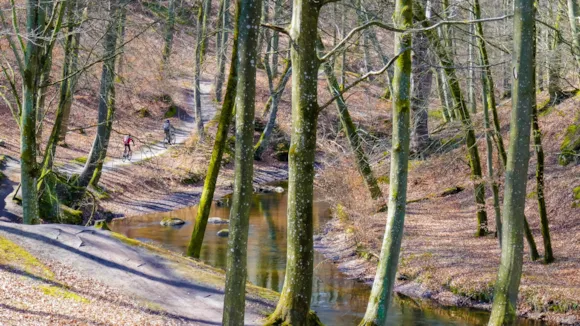
8.17 km
Gedebjerget is situated raised above Sæbygård Forest.
You only have to follow the path from the wooden pavilion "Skovlyst", pass the tennis courts to the stone showing at the right towards Gedebjerget.
When the area is covered by snow in the winter the place is suitable as skiing and sledge hill.
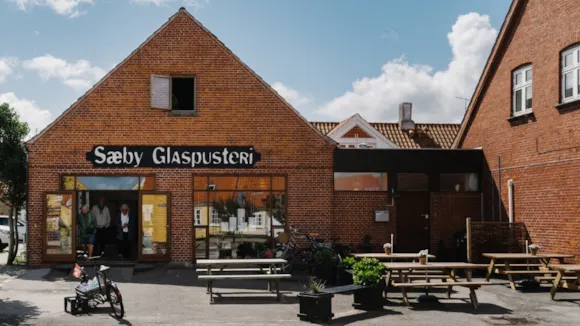
9.49 km
Glass is a material of sharp contrast: Hot and extreme to work with; cool, fragile and elegant when it's finished.
For out of season opening hours, please phone or check our website.
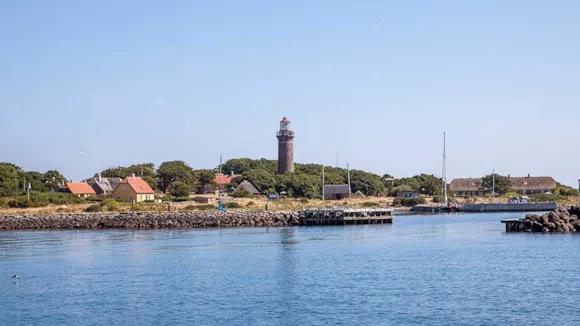
9.6 km
Hirsholm Lighthouse was built at a time when the island's population was around 200. Due to the large population at the time, a relatively large church was constructed right next to the lighthouse. The island had a vibrant local community that largely depended on the work provided by the lighthouse. In 1996, the lighthouse lamp was automated, which ended local employment as the need for staff disappeared. This led to the last permanent residents leaving the island, and the lighthouse thus became a symbol of a bygone era.
Hirsholm's Original Lighthouse
Although the settlement has ceased, Hirsholm still attracts many visitors each year. Today, the island and the surrounding islands are a protected scientific nature reserve, providing shelter to a rich birdlife that attracts many ornithologists. The old lighthouse from 1838 can still be visited and now serves as a lookout tower. The Hirsholm Islands are a popular destination for those wishing to experience the island's natural beauty and unique history. Transportation to the Hirsholm Islands is via Seadog, which sails from Frederikshavn several times a week, making it easy for visitors to explore this scenic area.

22.59 km
The lavish east wing constructed in a renaissance style was built between 1587 and 1591. The north wing, which housed Stygge Krumpen among others, was built in 1520 approximately.
If you participate in one of the tours of the castle, you will be able to hear all the amazing stories about the castle, the art collection, and the castle owners. During the tours, you might see the blood stain that does not wash away. You can also hear the story about the power-seeking palace lady, Ingeborg Skeel, who can make the blood of both young and old run cold. You might even catch a glimpse of her in the barrel-vaulted basements or in the tall tower room!
Formerly, the basement under Voergaard Castle was used to imprison people in “Rosedonten”, which would not have been a nice experience, since there are no windows and only one meter from the floor to the ceiling.
The art collections in Voergaard Castle are both a story and an experience in themselves. The castle has one of the most valuable and unique privately owned, French art collections in Denmark. The collection was brought to Voergaard by the castle´s latest owner, Count Ejnar Oberbech-Clausen, who after a long life in France bought Voergaard in 1955. Voergaard is still decorated and furnished as it was in the lifetime of Oberbech-Clausen.
In 2018, Voergaard castle was elected and celebrated as The most beautiful manor in Denmark in a vote by the organization Historical Houses. Historical houses state the following about Voergaard:
“Voergaard is a unique renaissance building from the 16th century, surrounded by the broadest moat in Denmark and outer walls measuring meters. The east facing sandstone portal, which you are met with after crossing the moat is the most distinguished manor portal in Denmark. The portal is shaped as a triumphal arch and decorated with diadem heads, doric columns, lions’ heads, and the monogram of Frederik the 2.”
The castle is immensely beautiful and worth experiencing inside as well as outside. Entrance to the castle is only possible with a guide.
Tickets can be purchased on the Voergaard website or in the Voergaard store.
Entrance to the park with the widest moat in Denmark is free.
Every year, in the middle of July, you can experience Medieval Days at Voergaard Castle. Where the time will be turned back to 1533 and you can meet Bishop Stygge Krumpen, musicians, craftsmen, and tradespeople as well as a multitude of life, smells, and sounds.
During the last weekend of November and the first weekend of December, the entire family can experience the old-fashioned Christmas spirit at Voergaard. You can see the lounges decorated for Christmas and maybe buy a Christmas present from one of the several stands at the Christmas market.
More information at voergaardslot.dk/en/home/
It is easy to travel around North Jutland by public transport. Plan your trip by bus, train, or Plustur on Rejseplanen
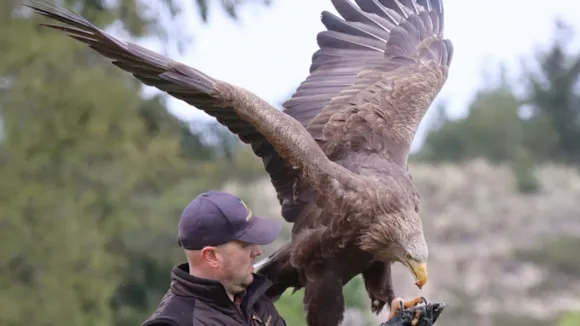
24.08 km
An attraction of world class and an experience for a lifetime!
In the Eagle Reserve's unique shows, you not only get the opportunity to experience and learn about the earliest relation in man's relationship with birds of prey; we make sure to take you on a journey from the Viking Age up through history with classic falconry and right up to today's technological development.
Our shows are always held outdoors on the stands that surround the lake of the Eagle Reserve, from which you have a view of the magnificent terrain as a background. With this, the stage is set for the audience to experience the birds of prey displaying their fantastic flying abilities in beautiful natural surroundings and the free and fresh air, here at Skagen.
During the performance, which lasts approx. 1 hour, you not only get a thorough introduction to both the world and Danish history of falconry as well as its use in the present, but also an insight into the biology of wild birds of prey. Our skilled presenters contribute with an interesting lecture alongside presenting the birds in their own way. So there is not only the rush of wings to feel here at the Eagle Reserve, but also a lot to learn.
At Ørnereservatet, they are proud not only to be able to show off our birds of prey from the ground - they always give the audience a completely unique experience that cannot be found anywhere else in the world. You get the opportunity to experience the birds up close when our falconers let them wander among the audience in the stands - You see the falcons being trained from the ground and in the difficult and classic discipline from horseback - You experience the eagles' acrobatics in the air above the display area and flying in interaction with horse and rider, and as something completely unique and modern, you can witness a genuine eagle car chase.
In the show, you will meet a large number of different species of birds of prey. In addition to the beautiful horses and the racing car, you see three lightning-fast falcon species, four different eagle species, the mythical Lamb's vulture and during the season there are also novelties, both four-legged and winged.
Video:https://youtu.be/Og96XAYoN7M
Webside: www.eagleworld.dk
Facebook: https://www.facebook.com/eagleworld9881
Instagram: https://www.instagram.com/eagleworlddk/
For more information about opening hours and price, go to this link.

26.49 km
The migrating dune, Råbjerg Mile, is about 1km wide and 1km long, it is made of roughly 3,5 million m3 sand, and is 40 meters high. Each year the dune moves around 15 meters towards the Northeast, closer to Grenen, the top of Denmark. Attempts of afforestation did not stop the migrating dune, which is expected to cover the main road to Skagen in a century or two. Once the dune reaches an area with trees or other plantations, it takes approximately 40 years for the tree to re-emerge on the other side of the dune. The same goes for the "small lakes", indentations caused by the varying groundwater level. These lakes are in the beginning poor on nutrition and vegetations but after some time the plants are coming back.
Behind the “mile” it leaves a small and moisty layer of sand that extended west out to Skagerak where Råbjerg Mile was formed more than 300 years in a landscape called Råbjerg Stene.
The whole area near Skagen was affected by sand migration with sand coming from the west. Entire areas were covered in sand as the dunes formed and therefore destroyed the opportunity to cultivate the land. The inhabitants were forced to move after a difficult fight with the sand, where the sand-covered church is a proof of the fight and struggle. The church was in the end swallowed and covered by the sand. Today, only the church tower is visible and there is planted lyme grass and conifers to slow down the sand migration.
Despite this, the area is nowadays under protection and owned by the state after strong protests from for example Jeppe Aakjær who was dissatisfied as the plantations (which should stop the sand migration) destroyed many beautiful nature areas.
Attention: While hiking through Råbjerg Mile there can be a risk of walking into quicksand!
Getting around North Jutland with public transport is effortless. Plan you trip with bus, train or ‘Plustur’ on rejseplanen.dk.
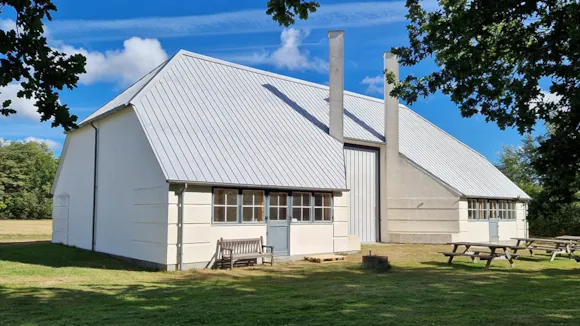
31.37 km
In 1979, the artist Per Kirkeby (1938-2018) visited Læsø. The interest in the island and the desire to be able to immerse oneself in the artistic work and in nature during long stays flourished.
Later that year, the Kirkeby family bought a share of Haabet from the then owners, Søren and Inga Rasmussen. In the following years, the farm was jointly owned by the families.
In the following years, the associated barn at Haabet in particular underwent a beautiful and carefully arranged conversion, where the Læsø farm's characteristic style and visibility of the rooms' original function was preserved. The redevelopment was intended to transform these areas into housing and work space for the Kirkeby family.
After Per Kirkeby's death in 2018, Læsø Kunst og Kultur acquired the property from the Kirkeby family in 2019.
Læsø Artist in Residence - Per Kirkeby's and Asger Jorn's artist homes on Læsø
During the year, Læsø Artist in Residence offers a number of events in the unique artist residences, where the renowned artists Per Kirkeby (1938-2018) and Asger Jorn (1914-1973) lived and worked for many years during their stay on Læsø.
Læsø Artist in Residence is a work and residence program for professional Danish and foreign visual artists, who are selected each year to stay at Læsø Artist in Residence in Per Kirkeby's and Asger Jorn's former artist residences.
For the events, the artist residences will be opened to the public. Here you can experience the stories of Per Kirkeby's and Asger Jorn's work and stay on Læsø, and meet the working artists and hear more about their work.
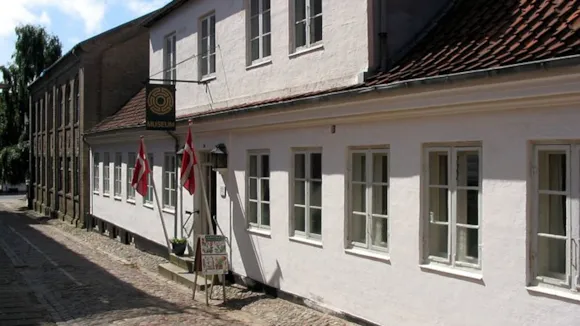
32.66 km
The best archaeology and contemporary history. See objects that date back 13,000 years to the present day, e.g. the only skull from an executed man, Thomas Bisp, on display at a Danish museum. See the 3200 m2 gardens where you can have a picnic and the most attractive buildings in Hjørring. You can buy coffee, tea and cakes in the café.